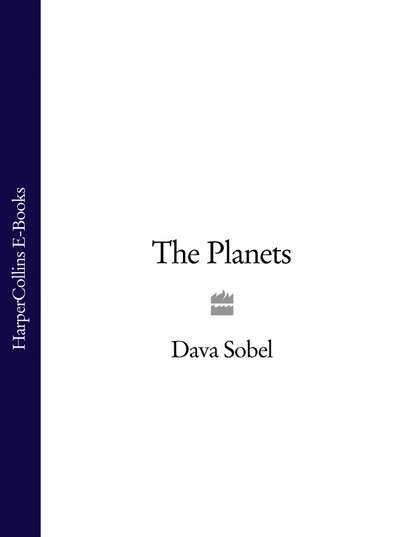По всем вопросам обращайтесь на: info@litportal.ru
(©) 2003-2024.
✖
The Planets
Автор
Год написания книги
2018
Настройки чтения
Размер шрифта
Высота строк
Поля
Magellan’s sudden identification of millions of land forms fomented a crisis in nomenclature. The International Astronomical Union responded with an all-female naming scheme that evoked a goddess or giantess from every heritage and era, along with heroines real or invented. Thus the Venusian highlands, the counterparts to Earth’s continents, took the names of love goddesses – Aphrodite Terra, Ishtar Terra, Lada Terra, with hundreds of their hills and dales christened for fertility goddesses and sea goddesses. Large craters commemorate notable women (including American astronomer Maria Mitchell, who photographed the 1882 transit of Venus from the Vassar College Observatory), while small craters bear common first names for girls. Venus’s scarps hail seven goddesses of the hearth, small hills the goddesses of the sea, ridges the goddesses of the sky, and so on across low plains named from myth and legend for the likes of Helen and Guinevere, down canyons called after Moon goddesses and huntresses.
The only male name on the map of Venus – the great mountain range Maxwell Montes – belongs to Scottish physicist James Clerk Maxwell, who performed pioneering work on electromagnetic radiation during the nineteenth century. When the five-mile-high peaks were detected in the 1960s via Earth-based radar studies made possible by Maxwell’s insights, it seemed fitting to attach his name to them. For several decades after discovery, Maxwell Montes stood as the sole eponymous feature on the planet, while the low regions on either side of the mountains were designated simply as Alpha Regio and Beta Regio (‘A’ region and ‘B’ region). When Magellan arrived thirty years later, and its revelations gave rise to names derived from women’s history, no one wished to evict Maxwell from his rightful place on Venus.
Yes, the faces in the crowd,
And the wakened echoes, glancing
From the mountain, rocky browed,
And the lights in water dancing –
Each my wandering sense entrancing,
Tells me back my thoughts aloud,
All the joys of Truth enhancing
Crushing all that makes me proud.
James Clerk Maxwell,
‘Reflex Musings: Reflections from Various Surfaces’* (#litres_trial_promo)
Magellan’s radar images look like night-time aerial reconnaissance photos, except that instead of providing a visual record, their blacks and whites reflect the varying textures of Venus’s exposed beauty: hundreds of thousands of small Venusian volcanoes pop out as bright (rough) bumps against the dark (smooth) background of the plains. On the flanks of giant volcanoes, bright (new) layers of lava drape themselves over the dark (old) flows. Mountainsides glittering in radar brightness seem to boast slopes coated with a veneer of reflective metal, perhaps fool’s gold, that adheres to Venusian rock at the cooler temperatures a few thousand feet up.
Etched in these images, Venus reveals her unique oddities, such as overlapping ‘pancake dome’ volcanoes that rise from surprisingly round bases to flat or softly mounded tops, and her numerous ‘coronae’, or sets of concentric rings that ornately surround so many of her domes, depressions and crowds of small volcanoes. Rushing streams of lava dug the long riverine channels that wind across her ample plains. On her high plateaux, tectonic folding and faulting have decorated several thousand square miles to look like crazy-tiled floors, now called ‘tesserae’. Evocative patterns in Venus’s extruded lava and cracked ground that reminded scientists of sea anemones and spider webs have become ‘anemone volcanoes’ and ‘arachnoids’.
After amassing their gallery of radar portraits, Venus specialists enhanced many of the images with colour for improved resolution. They chose a fire-and-brimstone palette, beginning with the russet hue of the first photos taken by the Russian Venera spacecraft, continuing the theme in ochre, umber, sienna, copper, pumpkin and gold. The vibrant colours suit the seared scenery, the rock that spewed forth as lava and still retains its near-plastic consistency, the massifs ascending to altitude without ever hardening harder than toffee. Bright shades befit the youthful visage of a planet that only recently (within the last half billion years) repaved itself in veritable floods of lava, which welled up and covered over almost every vestige (about 85 per cent) of her ancient past.
Relatively few craters mar the new face of Venus, since the rate of cratering over these past 500,000 years is much reduced from the Solar System’s earliest days. Many small would-be intruders are vaporized on their way through the thick atmosphere, never to touch down, so that only the very largest impactors reach the surface intact. These collisions eject copious debris, yet all the rubble hugs close around the crater margins in neat festoons, as though contained there by the heavy air. The atmosphere likewise may have soothed the fury of Venusian volcanoes, compelling their expelled lava to seep and pour rather than erupt with explosive force.
Вы ознакомились с фрагментом книги.
Приобретайте полный текст книги у нашего партнера:
Приобретайте полный текст книги у нашего партнера:







